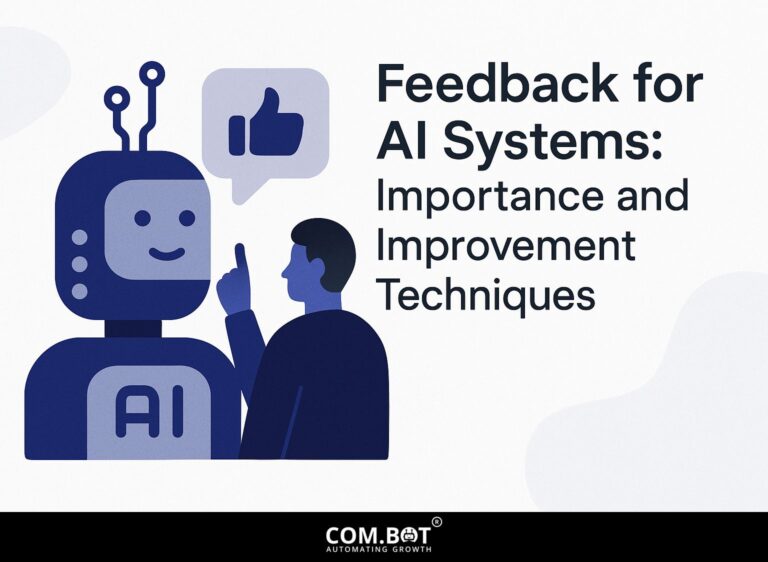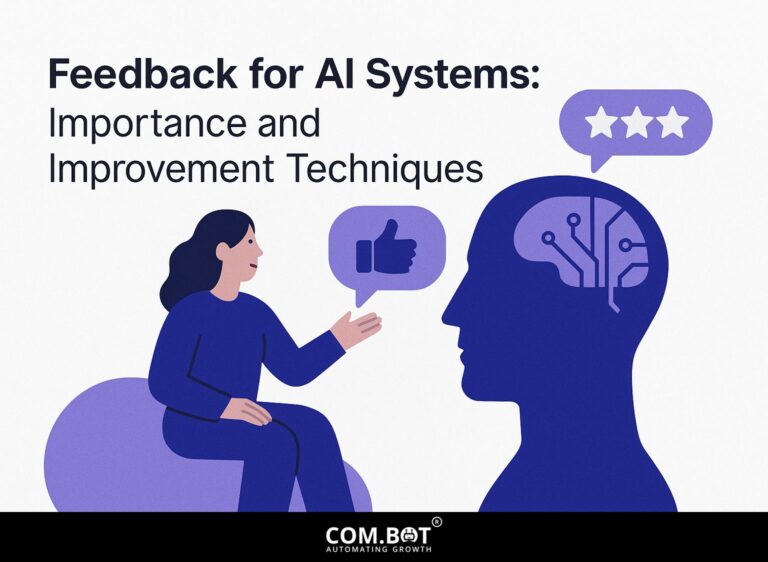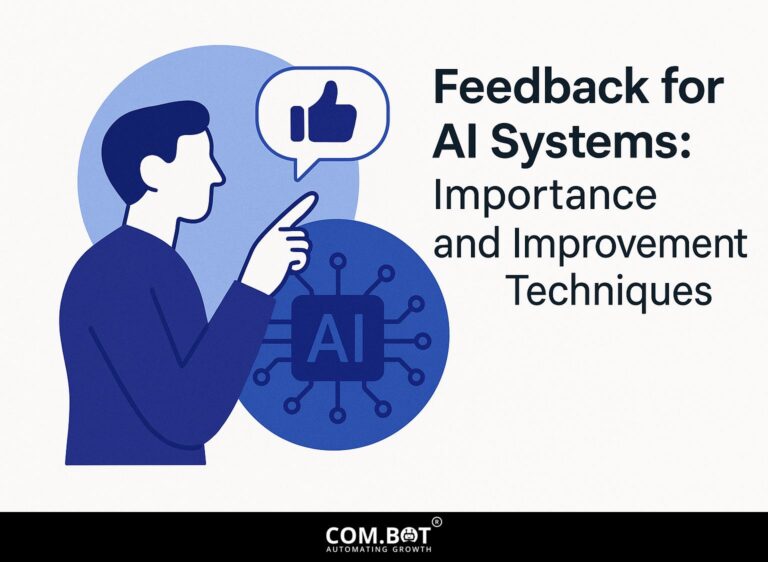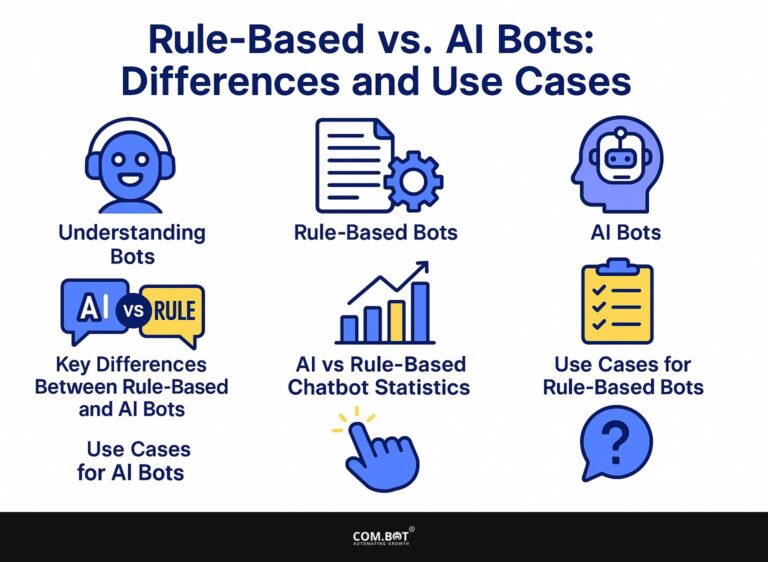Feedback for AI Systems: Importance and Improvement Techniques
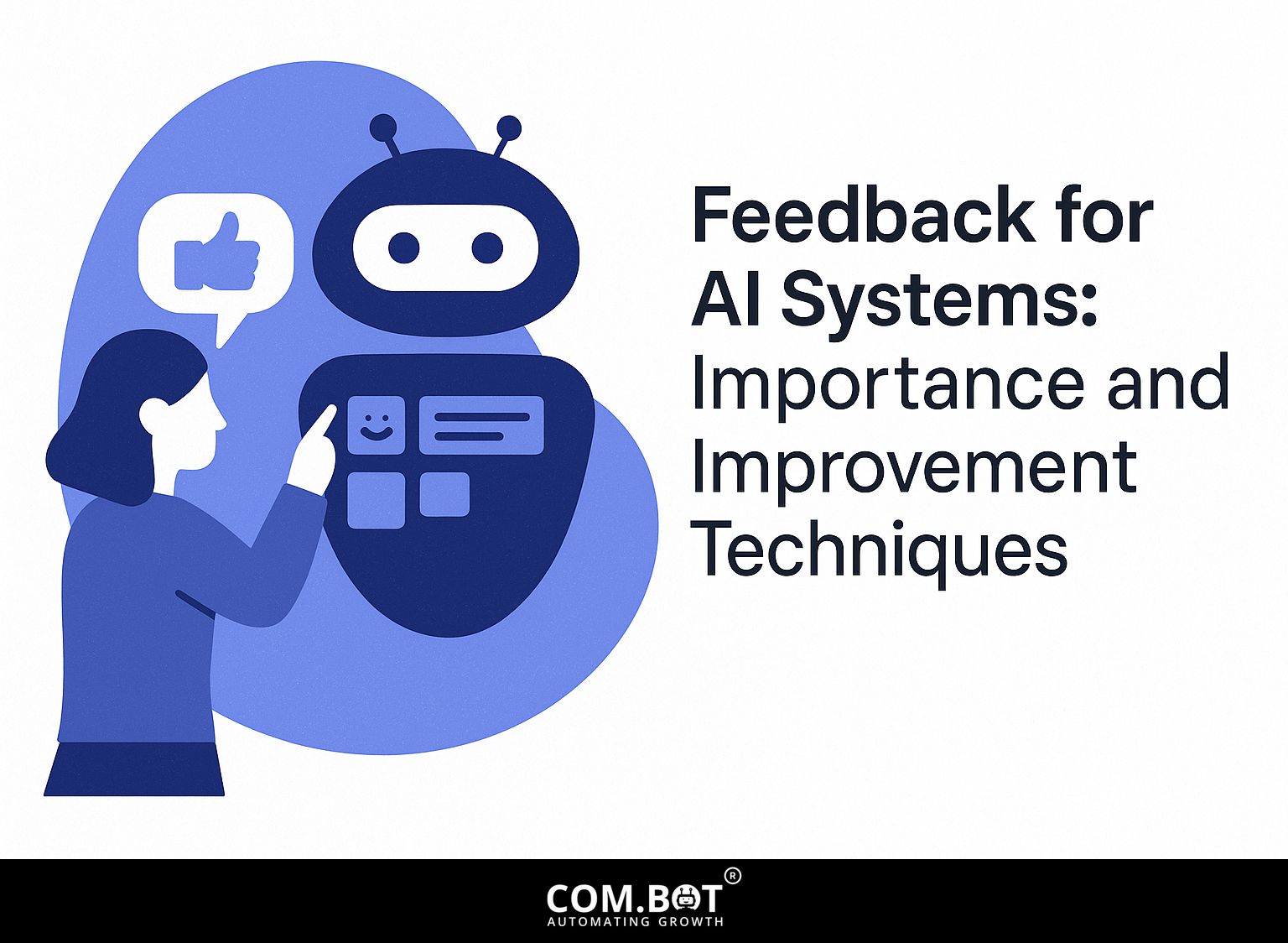
Realizing the full capabilities of Artificial Intelligence depends on how well the AI feedback loop works. This feedback loop process allows systems to learn and improve continuously, driving performance improvement through techniques like Reinforcement Learning. In this article, we’ll discuss why feedback is important in AI development, the types of methods available, and practical strategies to collect and study user feedback. Come with us to learn about this key area of AI that shapes its progress.
Key Takeaways:
- 1 Importance of Feedback in AI Development
- 2 AI Feedback Loop Statistics
- 3 Types of Feedback Mechanisms
- 4 Techniques for Gathering Feedback
- 5 Analyzing Feedback for Continuous Improvement
- 6 Challenges in Implementing Feedback Systems
- 7 Case Studies of Successful Feedback Integration
- 8 Future Trends in AI Feedback Systems
- 9 Frequently Asked Questions
- 9.1 1. What is the importance of feedback for AI systems?
- 9.2 2. How does feedback help in improving AI systems?
- 9.3 3. What are some effective techniques for providing feedback to AI systems?
- 9.4 4. Can feedback be used to prevent bias in AI systems?
- 9.5 5. How can we make sure feedback given to AI systems is correct and useful?
- 9.6 6. Is feedback necessary for all types of AI systems?
Importance of Feedback in AI Development
Feedback is important in creating AI because it makes models more accurate and improves how users interact with them, leading to better decisions. To enhance these interactions, it’s crucial to understand the importance and improvement techniques of feedback for AI systems.
AI Feedback Loop Statistics
AI Feedback Loop Statistics
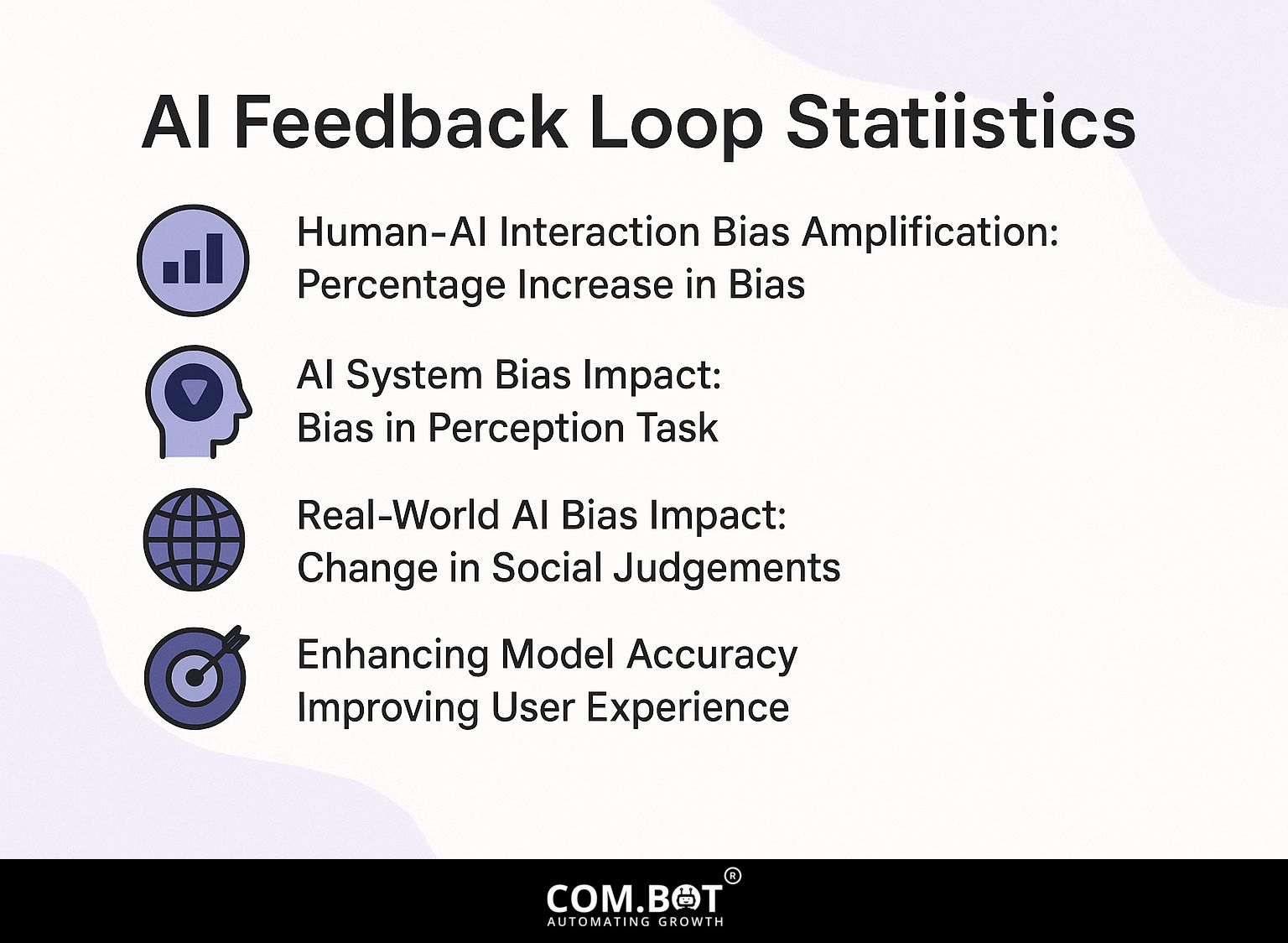
Human-AI Interaction Bias Amplification: Percentage Increase in Bias
AI System Bias Impact: Bias in Perception Task
Real-World AI Bias Impact: Change in Social Judgements
The AI Feedback Loop Statistics Examine how biases in Human-AI interaction affect decisions and perceptions in everyday situations. This data illustrates the complex interplay between AI systems and human judgments, highlighting the potential for increased bias through feedback loops.
Human-AI Interaction Bias Amplification shows that initial biases in human interactions with AI systems are notably present, with a 53.08% initial bias, which over time is amplified to 56.3%. This increase suggests that interaction with AI systems can intensify existing prejudices, possibly due to AI’s reinforcement of biased patterns perceived from human users.
In the realm of AI System Bias Impact, the statistics reveal the influence of AI on perception tasks. Initially, 49.9% of arrays are classified as sad, but following AI interaction, this increases to 56.3%. This signifies a perceptual shift caused by AI, potentially due to models trained on data that already carried these biases, which then influences human perception, reinforcing the bias.
The Real-World AI Bias Impact encompasses social judgments, demonstrating an increase in bias as well. The choice of white men as financial managers rose from 32.36% pre-exposure to AI interactions, to 38.2% post-exposure, marking a 5.84% increase. This suggests that AI systems can reinforce common biases, affecting decisions in areas like hiring.
The data from AI Feedback Loop Statistics Highlights the need to tackle biases in AI systems to stop them from increasing. As AI continues to affect human decisions, it is important to recognize and reduce these biases to achieve fair results in online and real-life choices. These statistics show the importance of regularly checking and improving AI models and systems to minimize bias and support fairness.
Enhancing Model Accuracy
Using supervised feedback can improve model accuracy by up to 30%, helping algorithms learn from their successes and errors.
To implement this strategy effectively, begin by establishing performance metrics to track your model’s outputs. Tools like TensorBoard allow you to visualize training progress and adjust parameters accordingly.
Create a routine for getting feedback by checking the model after several rounds and asking stakeholders to review the outcomes.
For example, a machine learning team at XYZ Corp increased their prediction accuracy from 75% to 90% by carefully studying the differences between predicted and actual results, which allowed them to make specific improvements to their algorithms.
Improving User Experience
User experience can significantly improve through real-time feedback mechanisms, resulting in a 25% increase in user satisfaction for chatbot interactions.
Utilizing tools like SurveyMonkey or Typeform can facilitate effective feedback collection. These platforms allow you to create quick surveys targeting users post-interaction with your chatbot.
For instance, a simple three-question survey can ask customers about their experience, specific pain points, and suggestions for improvement.
Analyze this data to inform updates or adjustments to the chatbot’s responses, thereby refining its intelligence and enhancing engagement. This step-by-step process makes the chatbot fit user needs better and builds a sense of community and quick replies.
Types of Feedback Mechanisms
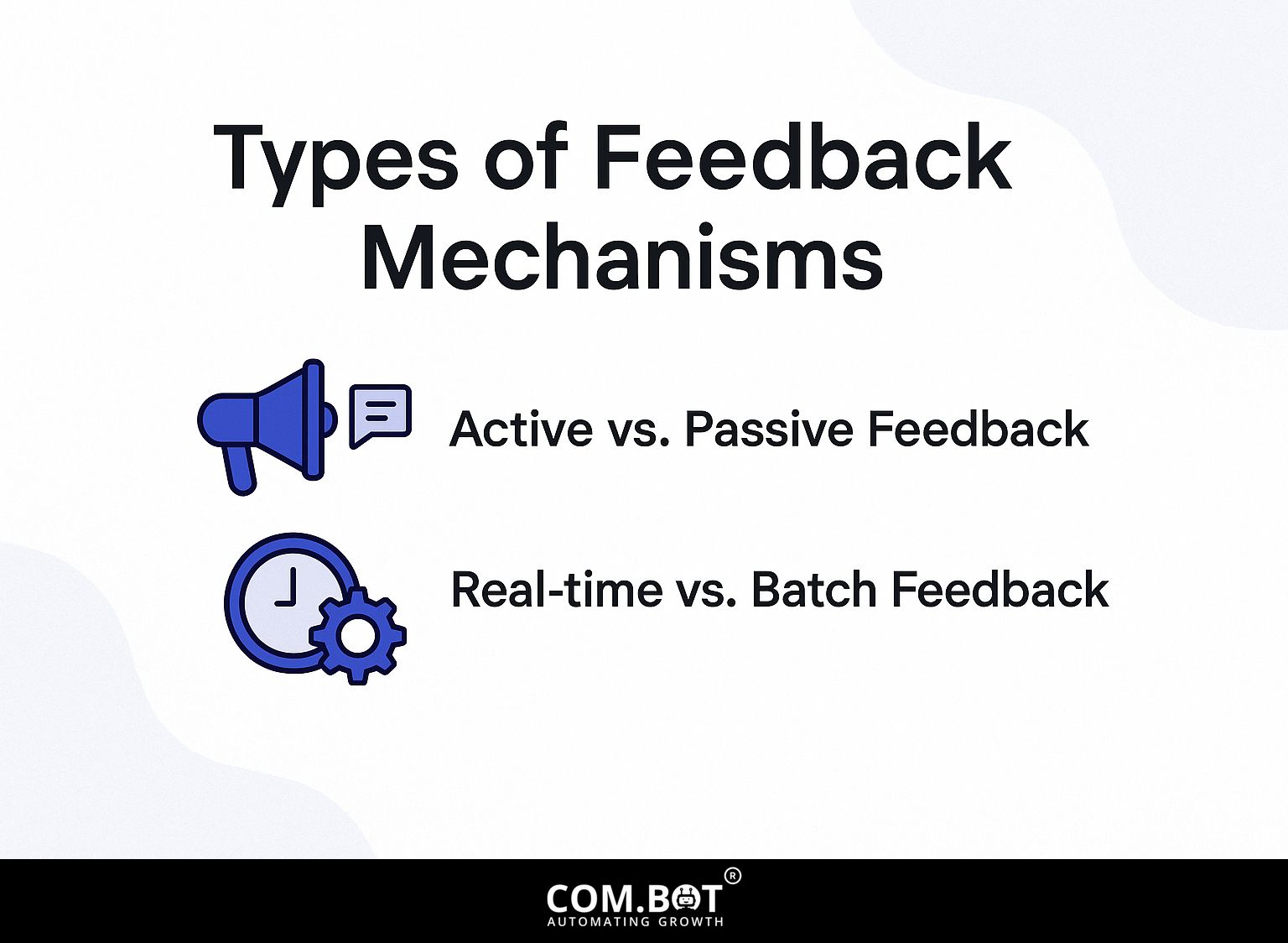
Knowing how active and passive feedback mechanisms work is important for creating useful AI systems. Understanding these mechanisms is crucial, as they play a significant role in the importance and improvement techniques of AI feedback systems.
Active vs. Passive Feedback
Active feedback involves direct user input, while passive feedback is gleaned from user interactions without explicit solicitation, allowing for richer data analysis.
You can use tools like Google Forms or SurveyMonkey to make surveys that collect users’ feedback, which helps obtain useful details.
On the other hand, passive feedback is effectively collected through analytics tools like Mixpanel or Google Analytics, which monitor user actions and interactions without asking direct questions.
By using both active feedback for instant questions and passive methods to observe user interactions over time, you can improve how you gather data and see a complete view of how satisfied users are.
Real-time vs. Batch Feedback
Real-time feedback processes allow immediate adjustments, while batch feedback can analyze trends over time, each with its own advantages.
Getting real-time feedback through tools like customer surveys or live chat allows quick changes to make user experience or product quality better. Tools like Sentry can monitor application performance in real time, alerting teams to issues immediately.
In contrast, batch feedback, gathered from weekly analytics reports or customer satisfaction surveys, helps identify overarching trends. Tools like Google Analytics or Apache Spark can handle large amounts of data quickly.
By applying both strategies, companies can quickly adjust and gain knowledge to plan ahead.
Techniques for Gathering Feedback
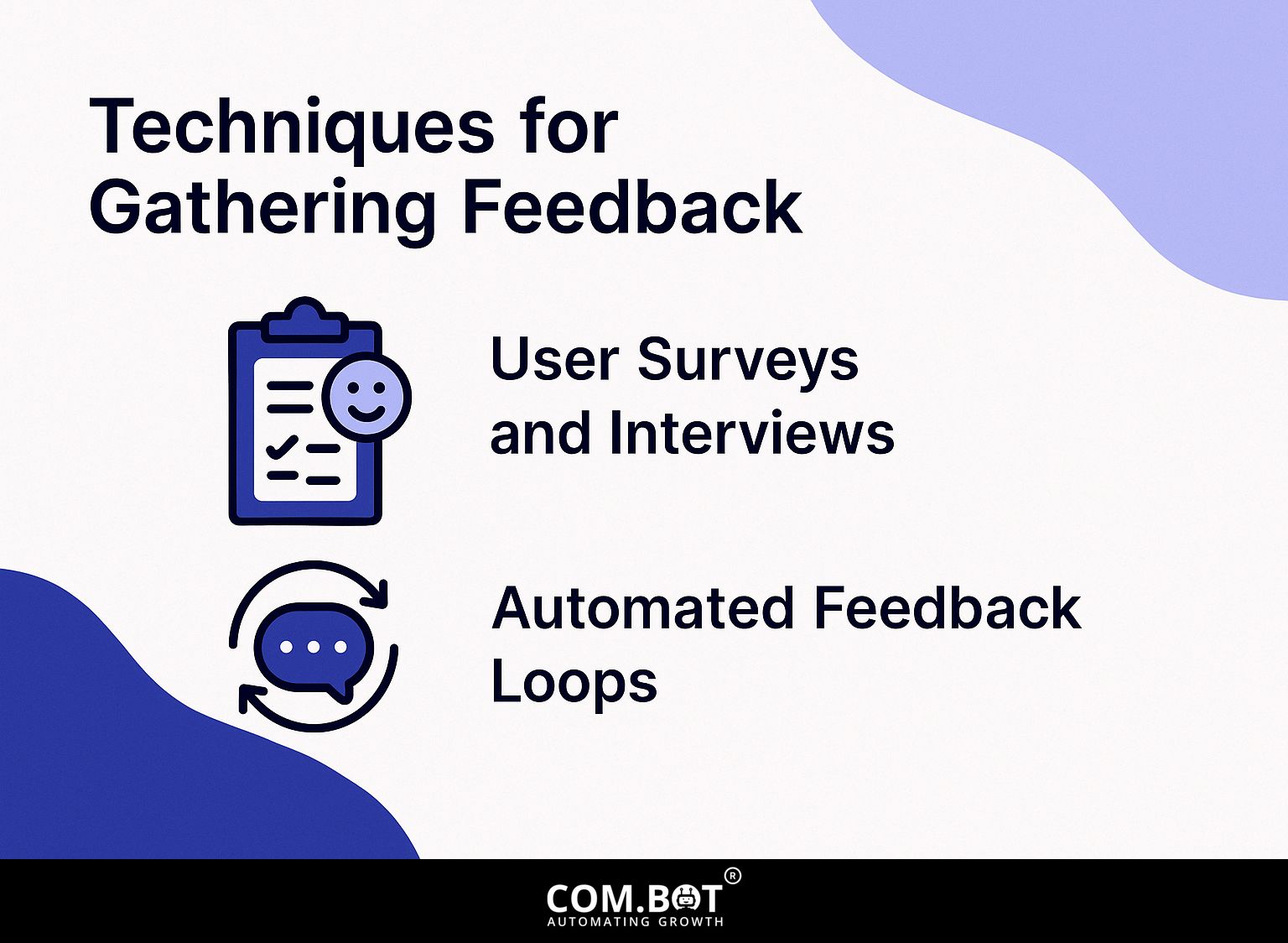
Gathering feedback through user surveys and automatic methods can significantly improve the data quality for AI systems. This approach aligns with the principles outlined in our analysis of feedback for AI systems and how it enhances their performance.
User Surveys and Interviews
User surveys can give useful information, with response rates usually between 20% and 30%, offering important data for measuring performance.
To design effective surveys, consider using tools like Typeform or Google Forms. Start by defining clear objectives for your survey; this helps in formulating relevant questions.
Make your questions brief and combine different question styles-such as multiple-choice for numbers and open-ended for detailed information. Customize your invitation email for each person and mention a short reason for the survey to get participants interested.
Share your survey on social media and in newsletters. Provide incentives, like discounts or free items, to increase the number of responses.
Automated Feedback Loops
AI systems can keep getting better with feedback loops that use reinforcement learning to learn from how users interact with them.
To set up automatic feedback loops, think about using TensorFlow or PyTorch. Both provide solid systems for building reinforcement learning models.
For instance, in TensorFlow, you can use the TF-Agents library to simulate environments and train agents. In a practical setup, a recommendation system could use data from user clicks to modify its suggestions in real-time, leading to increased user interest.
PyTorch’s computation graph changes during runtime, which simplifies trying out different model designs. This makes it perfect for quickly testing and improving plans using live user responses.
Analyzing Feedback for Continuous Improvement
Looking at feedback through data analysis helps teams to regularly improve and fine-tune AI features and algorithms with a clear and organized approach.
-
To effectively analyze feedback data, start by employing statistical tools such as R or Python’s pandas library, which facilitate the manipulation and examination of data sets.
-
For instance, you can use R’s ‘ggplot2’ to visualize performance metrics, highlighting trends that need attention.
-
Collect feedback from users through surveys or interviews, and then compare this feedback with numerical data.
-
This will help identify discrepancies and guide your improvements, ensuring you align AI features closely with user needs.
Challenges in Implementing Feedback Systems
Implementing feedback systems comes with challenges, including complexity management and ethical considerations that can hinder effectiveness.
To manage complicated issues, use tools like UserVoice for easy feedback collection and focus on improvements based on user suggestions.
To address ethical concerns, create rules using standards like the AI Ethics Guidelines from the European Commission. Focus on transparency by clearly communicating how feedback is used and ensuring data privacy.
Regularly review your feedback processes to confirm they align with your ethical standards and business objectives. Worth exploring: Feedback for AI Systems: Importance and Improvement Techniques.
This approach encourages a more responsible and efficient feedback system.
Case Studies of Successful Feedback Integration
Looking at examples of effective feedback use shows how AI can be improved in different industries.
For example, a retail brand used HubSpot to collect customer feedback and included these responses in their AI-based marketing campaigns. They improved product suggestions, leading to a 30% increase in conversion rates.
Meanwhile, a healthcare company applied feedback through Salesforce, improving patient engagement by tailoring AI responses based on collected data. These strategies improved customer experience and gave useful information, highlighting the importance of feedback in AI development and use in different industries.
Future Trends in AI Feedback Systems
AI feedback systems will change with new trends, like adding teamwork tools for quick updates.
These collaborative features will use new methods for gathering data, letting users share their information directly.
For example, platforms can use blockchain technology to provide clear and secure data sharing, which builds trust among participants.
Tools employing machine learning will analyze feedback patterns to tailor responses on-the-fly, improving user experience. To fully understand these advancements, you can learn more about techniques for enhancing AI feedback systems and their importance in modern applications.
This change allows companies to improve their AI models more quickly and create a more involved user community, resulting in more intelligent and responsive systems.
Frequently Asked Questions
1. What is the importance of feedback for AI systems?
Feedback is important for AI systems because it helps them learn and perform better. It lets them make changes and fixes based on past experiences, which makes their decision-making more accurate and quicker.
2. How does feedback help in improving AI systems?
Feedback offers helpful details to find and fix any issues or mistakes in the AI system. This continuous improvement process can lead to better accuracy, reliability, and overall performance of the system.
3. What are some effective techniques for providing feedback to AI systems?
Some techniques for providing feedback to AI systems include using labeled data, incorporating human feedback, and implementing reinforcement learning algorithms. These techniques help the AI system to continuously learn and improve its performance.
4. Can feedback be used to prevent bias in AI systems?
Yes, feedback can be used to identify and eliminate bias in AI systems. By routinely examining feedback, AI systems can identify and fix any biased behaviors in how they make decisions, encouraging fairness and equality.
5. How can we make sure feedback given to AI systems is correct and useful?
To collect accurate and helpful feedback, gather opinions from a diverse group of people. This helps gather different viewpoints and reduces possible biases.
6. Is feedback necessary for all types of AI systems?
Yes, feedback is essential for all types of AI systems as it enables them to continuously learn and improve their performance. Whether it’s a basic chatbot or an advanced self-driving car, getting feedback is important for their growth and success.
